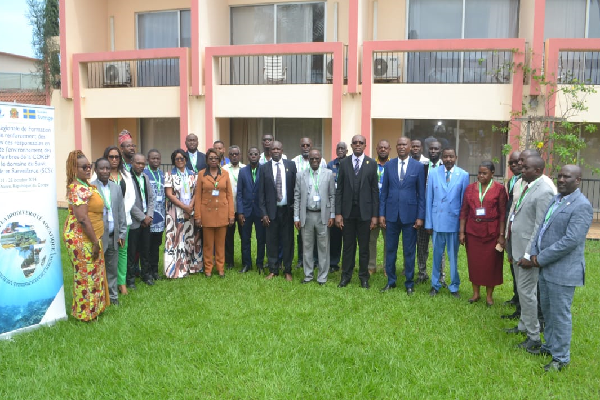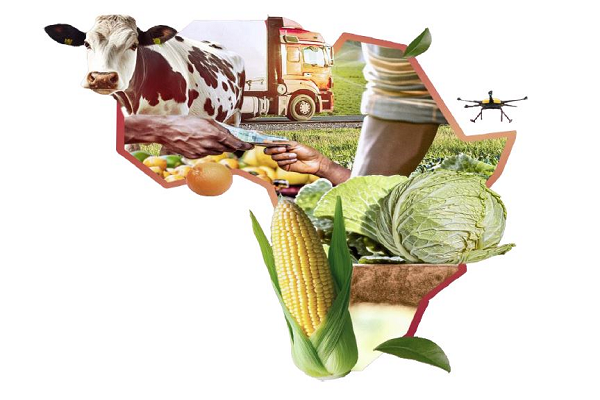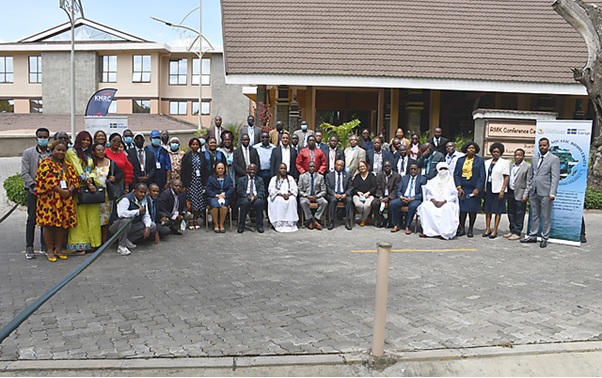Conserving Aquatic Biodiversity in African Blue Economy
Project Brief/Background
The African Union - InterAfrican Bureau for Animal Resources (AU-IBAR), with funding support from the Swedish International Development Cooperation Agency (SIDA), is implementing a project on “Conserving Aquatic Biodiversity in African Blue Economy’, for three years (October 2021 - 2024).
The Project ‘Conserving Aquatic Biodiversity in the Context of The Africa Blue Economy’ sets out an agenda for action to “Enhance institutional capacity of African Union Member States and Regional Economic Communities on the utilization, conservation and protection of aquatic biodiversity in the context of the Africa Blue Economy Strategy.”
The African continent is adjacent to highly productive marine ecosystems including the seven African Large Marine Ecosystems (LMEs) viz., Agulhas Current LME, Benguela Current LME, Guinea Current LME, Canary current LME, Mediterranean Sea LME, Red Sea LME and Somali Current LME. The continent is also endowed with networks of rivers and lakes. The seas, oceans, lakes and rivers inhabit significant number of biodiversity (inhabit living and non-living resources) that provide sources of livelihoods, food security and income.
However, the sustainability of these current benefits are under threats. Several factors are threatening aquatic biodiversity, ecosystems and environmental sustainability in Africa. . These include overexploitation of living aquatic species, pollutions from several sources (land-based municipal and agricultural activities, effluents from mining activities), and uncontrolled introduction of exotic species in aquatic production systems, etc.
The successful implementation of this project will contribute to reducing major threats to biodiversity and ecosystem, improve health of the aquatic environments and thus provide benefits to AU member states, human communities that depend on the blue economy resources.
Outcomes/Objectives
The overall objective of the project is to enhance the policy environment, regulatory frameworks and institutional capacities of AU member states and regional economic communities to sustainably utilize and conserve aquatic biodiversity and ecosystems.
The project also specifically addresses four strategic objectives aligned to the conservation and protection of aquatic biodiversity and ecosystems in the context of the Africa Blue Economy Strategy.
These include:
- Ratifying and/or aligning relevant international/regional instruments related to blue economy themes (with specific reference to protecting and conserving biodiversity)
- Optimizing conservation and sustainable biodiversity while minimizing conflicts among users of blue economy resources
- Strengthening measures for mitigating the negative impacts of coastal and marine tourism, oil, gas, deep sea mining and climate change on aquatic biodiversity and the environment.
- Strengthening gender inclusivity in aquatic biodiversity conservation and environmental management
Stakeholders
The project implementation takes into consideration the targeted stakeholder group(s) and their specific needs, abilities, and resources. The more specific the characterization, the better. This will specifically mean ensuring that men, women, and other disenfranchised groups with a stake in the project are included and have a voice.
The AU member states, RECs, specialized regional institutions, environmental-based NGOs will be both beneficiaries as well as partners in the implementation of this project. The capacity of these stakeholders will be strengthened in aquatic biodiversity conservation, environmental management, climate resilience, sustainable coastal tourism and infrastructure development etc.
The project will establish strong partnerships and collaboration with national, regional and continental projects to minimize duplications and generate synergies in interventions. This would partly be achieved by participating in the steering committees and other’s events of related projects. Also, within the framework of the African Fisheries Reform Mechanism (AFRM), periodic consultations will be organized under the Africa Platform for Regional Institutions in Fisheries, Aquaculture and aquatic systems (APRIFAAS) for information sharing on activities and work plans. These consultations would significantly involve, among others, Regional Sea Conventions (RSCs), LMEs secretariats and other partners to generate synergies in the implementation of activities.
In summary, the project provides the foundation for a shared understanding among all stakeholders at local and regional level; namely: AU Members States, Local Communities; Fisheries and aquaculture biodiversity dependent communities; Youth and Women, Regional Economic Communities (REC), and Specialized Regional Institutions. The project is being implemented by the African Union/ African Union InterAfrican Bureau for Animal Resources (AU-IBAR); with financial support from the Swedish International Development Cooperation Agency (SIDA).
Results and Activities
Several activities have been lined up to address the four identified project objectives. The first year of project implementation would be considered as an inception period largely to undertake baseline studies. The outcome of the studies might refine the follow up activities resulting in a narrow and focused interventions.
However to ensure smooth implementation of the project deliverables, three main activities will be implemented, namely:
An inception workshop: In advance of full implementation of the project, an inception workshop would be organized to apprise and raise awareness among the stakeholders on the objectives, activities and their role in the implementation of the project. A presentation of the project rationale, activities and implementation plans would be made. Also, proven experts and institutions in aquatic environmental management and biodiversity conservation would be invited to do presentation on issues and status of conservation of African aquatic biodiversity and environmental and management sustainability, including the role of women and youth as well as the private sector.
An exit strategy development: This will be developed to identify suitable mechanisms for seamless phasing out of the project that would ensure the sustainability of the achievements.
Closure workshop: At the end of implementation of the project, a closure workshop would also be organized to inform relevant policy makers (including representatives of relevant Hon. Ministers from AU member states), Non State Actors (NSAs) etc. on the outcomes of the results to ensure buy-in and concurrence for sustainability of project outcomes.
Dissemination of relevant reports to inform follow-up activities for full implementation of the project
Engage with Us
AU-IBAR implements its mandate and core functions through various and complementary business processes, among them facilitating the establishment of systems and capacity for data, information and knowledge management. Knowledge sharing and stakeholder engagement will be strengthened through regular engagement with other multi-stakeholders in the sector.
Interested actors are free to join
Resources
A key project intervention will involve undertaking several assessments and studies that will be stored at
Some assessment will include:
- Studies of relevant continental and global biodiversity and environmental instruments to develop priority actions to support AU member states for informed decision making for enhanced ratification and implementation.
- Regional assessments to document challenges and priority actions to identify implementation of relevant global instruments impinging on fisheries and aquaculture.
- Commission a study to assess the status of Monitoring Control and Surveillance systems for conservation and protection of biodiversity for combating unsustainable practices of fishing and other activities (e.g. piracy) on other blue economy resources in AU member states and regional levels and develop mechanism to strengthen regional MCS systems.
- The project will support development of regional and national strategies for inclusion of gender in Blue Economy and enhance their role in restoration of degraded habitats, depleted ecosystems e.g. fauna and flora including mangroves, coral reefs, marine mammals (e.g. Manatees) other fish stocks.








